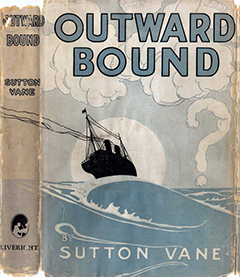
Chiswick is a district of west London, England. It contains Hogarth's House, the former residence of the 18th-century English artist William Hogarth; Chiswick House, a neo-Palladian villa regarded as one of the finest in England; and Fuller's Brewery, London's largest and oldest brewery. In a meander of the River Thames used for competitive and recreational rowing, with several rowing clubs on the river bank, the finishing post for the Boat Race is just downstream of Chiswick Bridge.

The London Borough of Hounslow is a London borough in West London, England, forming part of Outer London. It was created in 1965 when three smaller Middlesex council areas amalgamated under the London Government Act 1963. It is governed by Hounslow London Borough Council.

The London Borough of Richmond upon Thames in southwest London forms part of Outer London and is the only London borough on both sides of the River Thames. It was created in 1965 when three smaller council areas amalgamated under the London Government Act 1963. It is governed by Richmond upon Thames London Borough Council and is divided into nineteen wards. The population is 198,019 and the major settlements are Barnes, East Sheen, Mortlake, Richmond, Twickenham, Teddington and Hampton.

Sir Dirk Bogarde was an English actor, novelist, and screenwriter. Initially a matinée idol in films such as Doctor in the House (1954) for the Rank Organisation, he later acted in art-house films. In a second career, he wrote seven best-selling volumes of memoirs, six novels, and a volume of collected journalism, mainly from articles in The Daily Telegraph.

Richmond is a town in south-west London, 8.2 miles (13.2 km) west-southwest of Charing Cross. It is on a meander of the River Thames, with many parks and open spaces, including Richmond Park, and many protected conservation areas, which include much of Richmond Hill. A specific Act of Parliament protects the scenic view of the River Thames from Richmond.

Renaldo and Clara is a 1978 American film directed by Bob Dylan and starring Bob Dylan, Sara Dylan and Joan Baez. Written by Dylan and Sam Shepard, the film incorporates three distinct film genres: concert footage, documentary interviews, and dramatic fictional vignettes reflective of Dylan's song lyrics and life.

The Fortune Theatre is a 432-seat West End theatre on Russell Street, near Covent Garden, in the City of Westminster. Since 1989 the theatre has hosted the long running play The Woman in Black.

Sir Donald Alfred Sinden was an English actor.

I Could Go On Singing is a 1963 British-American musical drama film directed by Ronald Neame, starring Judy Garland and Dirk Bogarde. Originally titled The Lonely Stage, the film was renamed so that audiences would know that Garland sings in it; she had not sung in a film since A Star Is Born in 1954.

The Arts Theatre is a theatre in Great Newport Street, in Westminster, Central London.

Henry Kendall AFC, was an English stage and film actor, theatre director and revue artiste.

See How They Run is an English comedy in three acts by Philip King. Its title is a line from the nursery rhyme "Three Blind Mice". It is considered a farce for its tense comic situations and headlong humour, heavily playing on mistaken identity, doors, and vicars. In 1955 it was adapted as a film starring Roland Culver.
Gate Theatre Studio, often referred to as simply the Gate Theatre, is a former independent theatre on Villiers Street in London.
Philip King was an English playwright and actor, born in Yorkshire. He is best known as the author of the farce See How They Run (1944). He lived in Brighton and many of his plays were first produced in nearby Worthing. He continued to act throughout his writing career, often appearing in his own plays.

Outward Bound is a 1923 play written by Sutton Vane.

The Vortex is a play in three acts by the English writer and actor Noël Coward. The play depicts the sexual vanity of a rich, ageing beauty, her troubled relationship with her adult son, and drug abuse in British society circles after the First World War. The son's cocaine habit is seen by many critics as a metaphor for homosexuality, then taboo in Britain. Despite, or because of, its scandalous content for the time, the play was Coward's first great commercial success.

Doctor at Sea is a 1955 British comedy film, directed by Ralph Thomas, produced by Betty E. Box, and based on Richard Gordon's 1953 novel of the same name. This was the second of seven films in the Doctor series, following the hugely popular Doctor in the House from the previous year. Once again, Richard Gordon participated in the screenwriting, together with Nicholas Phipps and Jack Davies, and once again Dirk Bogarde played the lead character Dr Simon Sparrow. The cast also includes James Robertson Justice and Joan Sims from the first film, but this time playing different characters. This was Brigitte Bardot's first English-speaking film.

Chariots of Fire is a 2012 stage adaptation of the 1981 Oscar-winning film of the same name. Production of the Olympic-themed play, which opened at London's Hampstead Theatre 9 May 2012 and transferred to the West End on 23 June 2012, was partially inspired by the 2012 London Summer Olympics.
The Kew Bridge Studios were a British film studio located in Kew Bridge, Brentford, west London which operated from 1919 to 1924. The site had originally been a theatre, but due to the rapid expansion of the British film industry after the First World War it switched to filmmaking as the existing studios were overspilling. The studios hosted a number of independent film-makers during the silent era, including Walter West and Guy Newall.
Beatrice Augusta de Leon born Beatrice Augusta Lewisohn was a British theatre manager, dance school owner and impresario. She and Jack de Leon founded the Q Theatre funded by Delia de Leon.

















